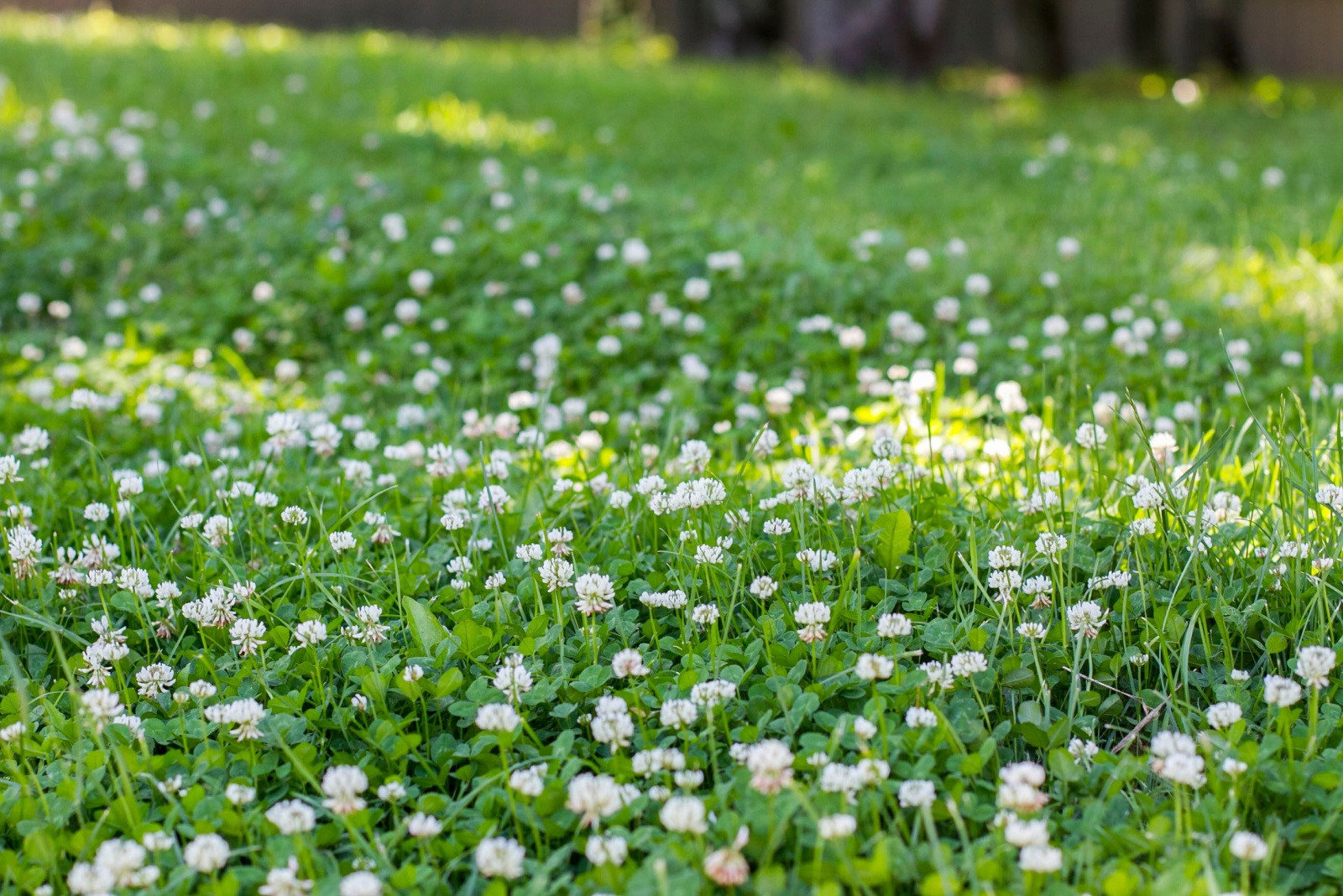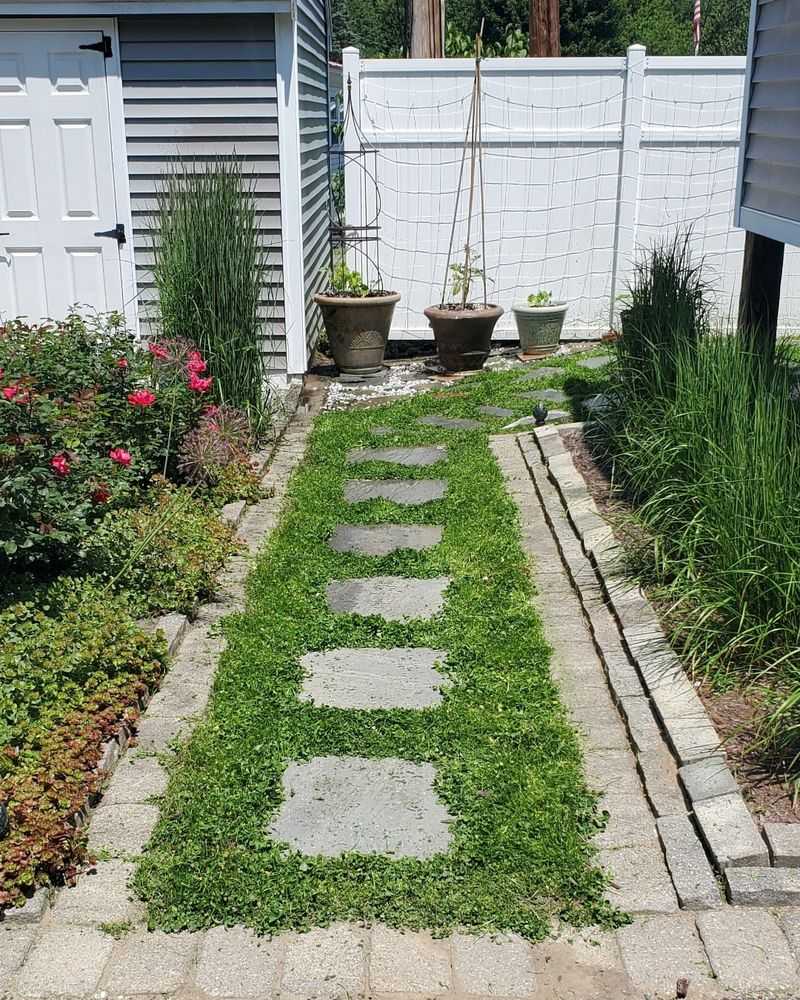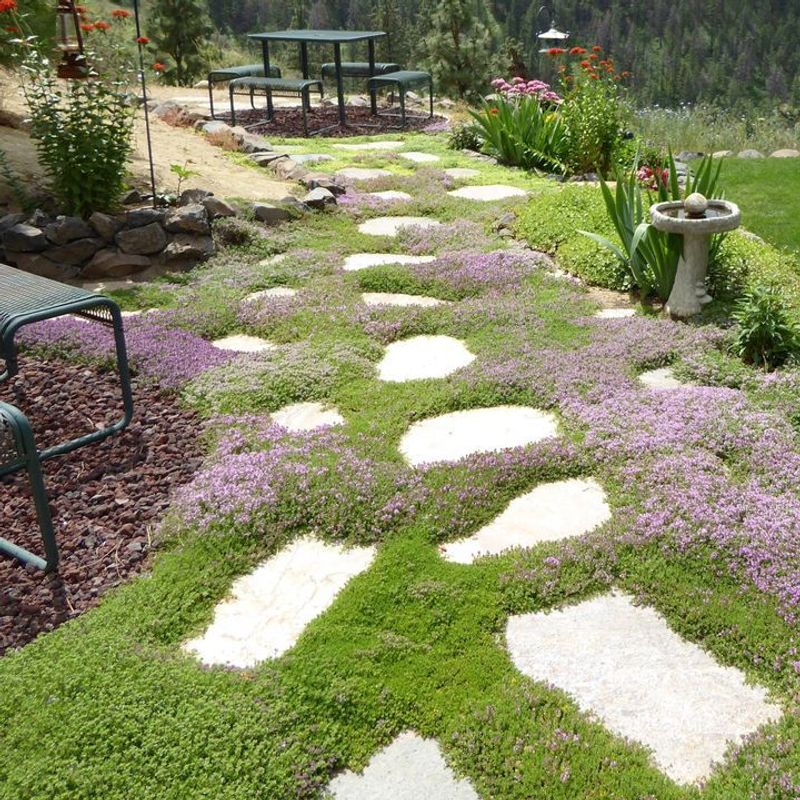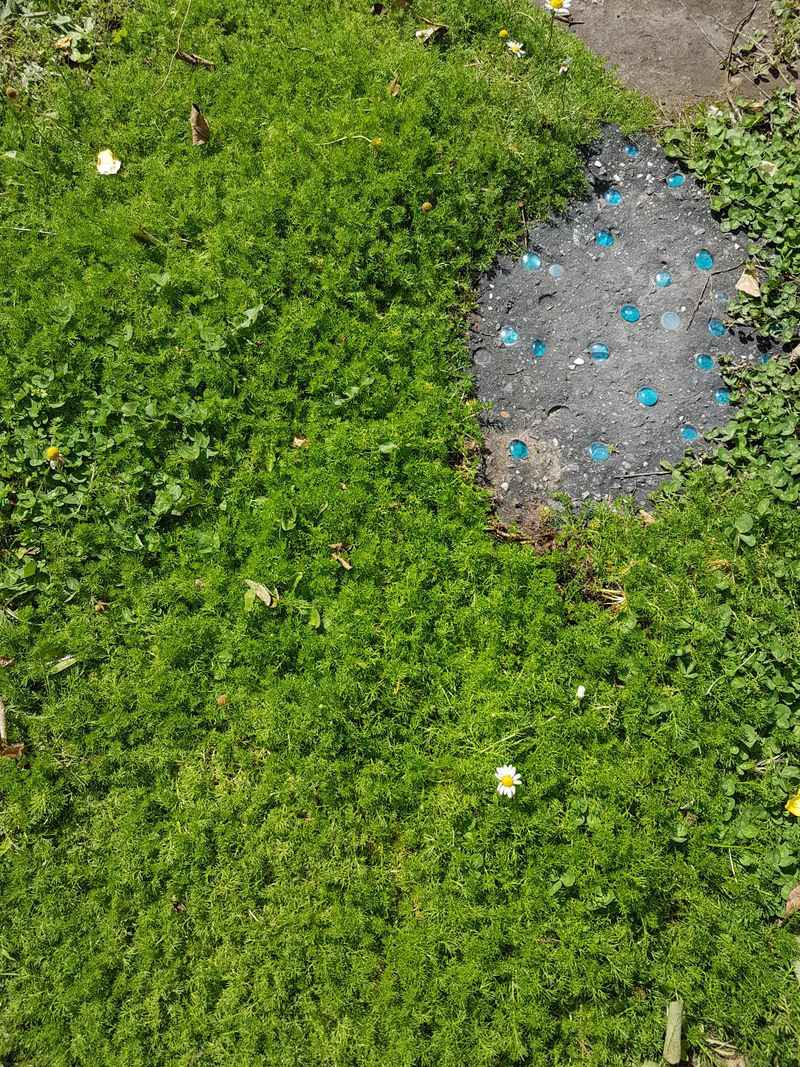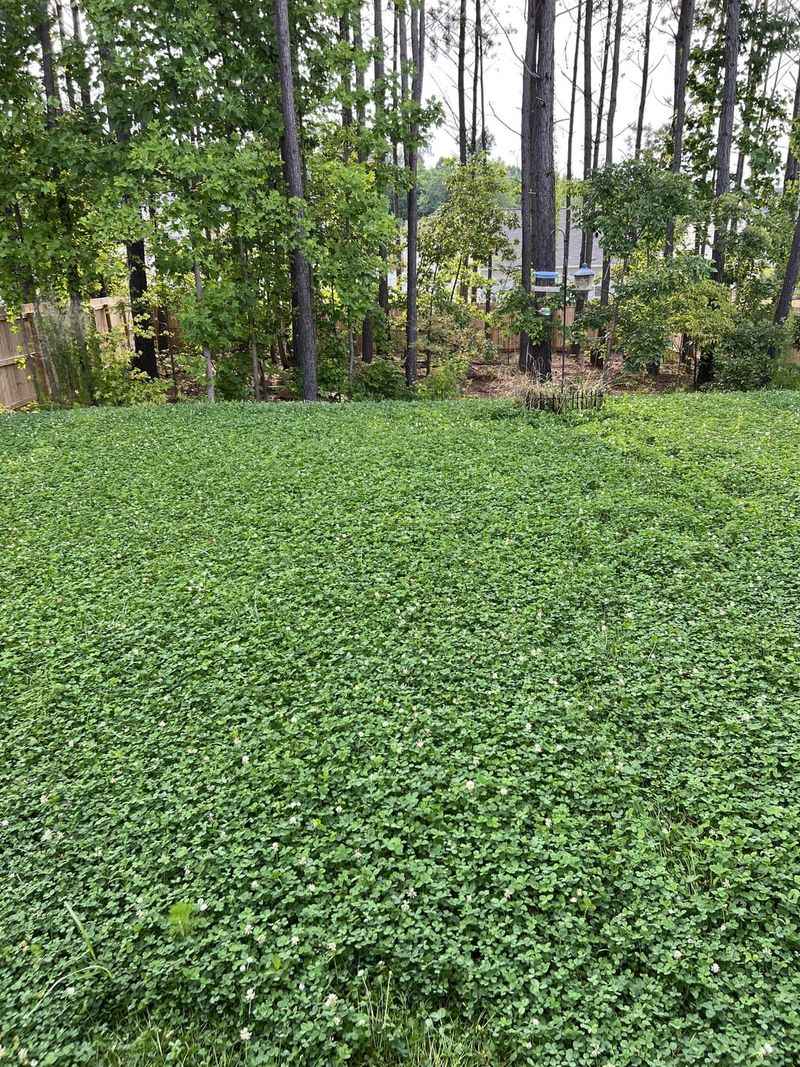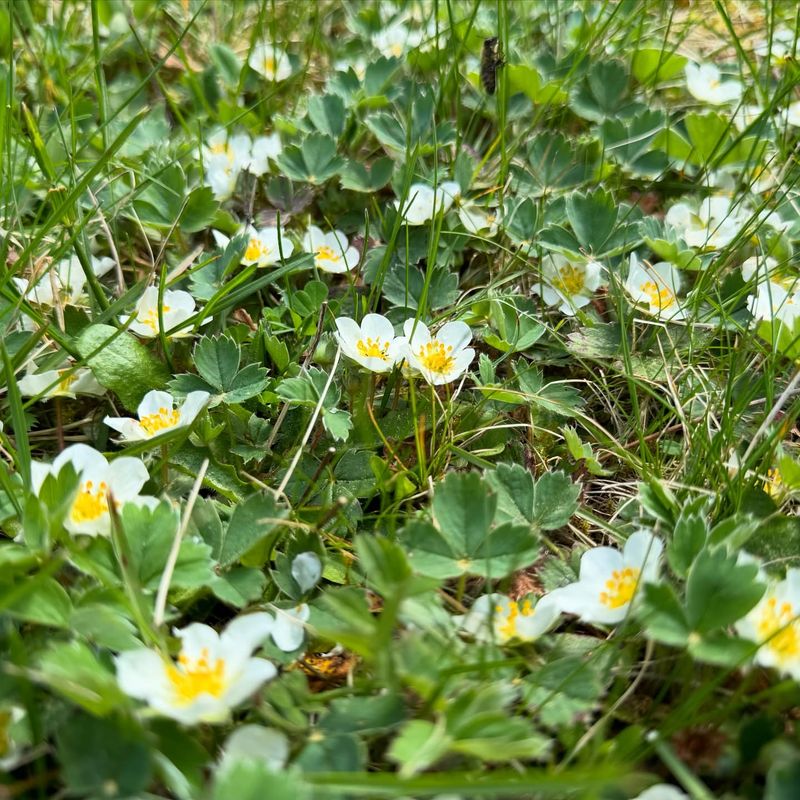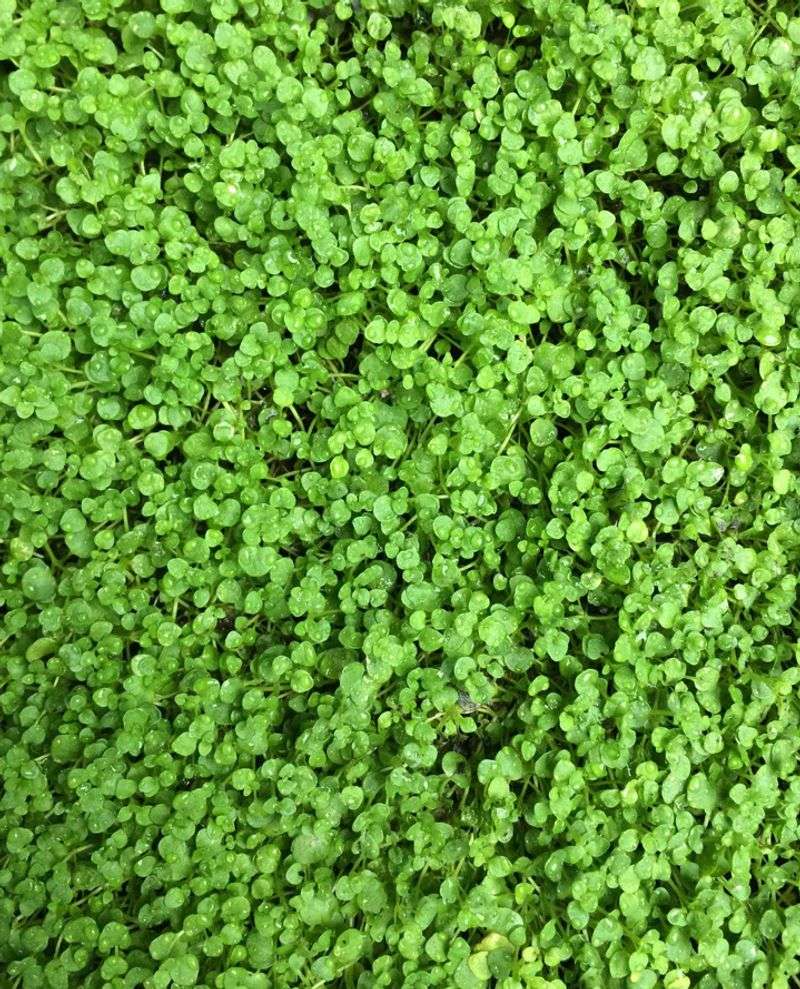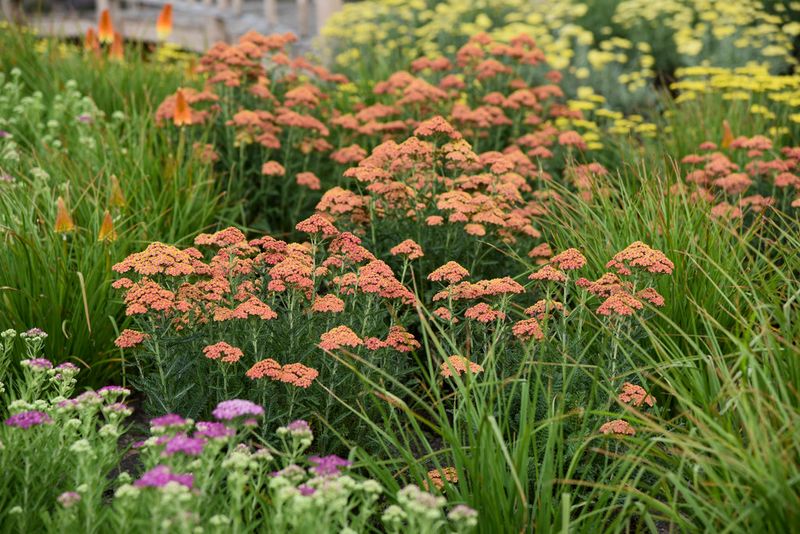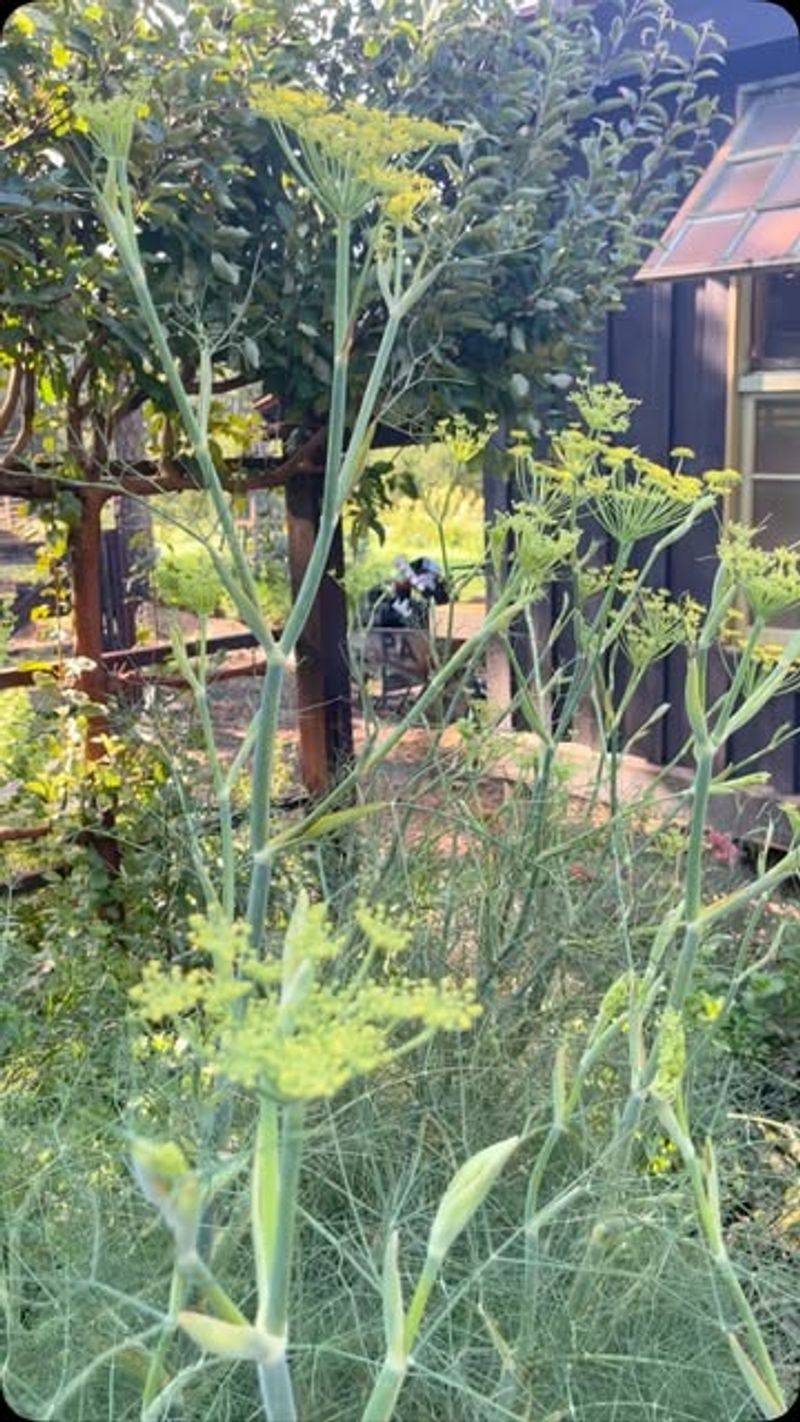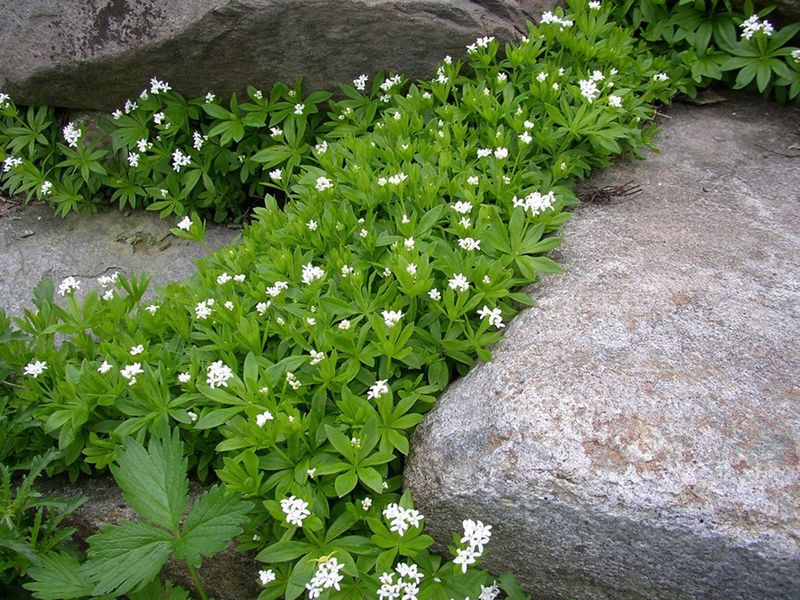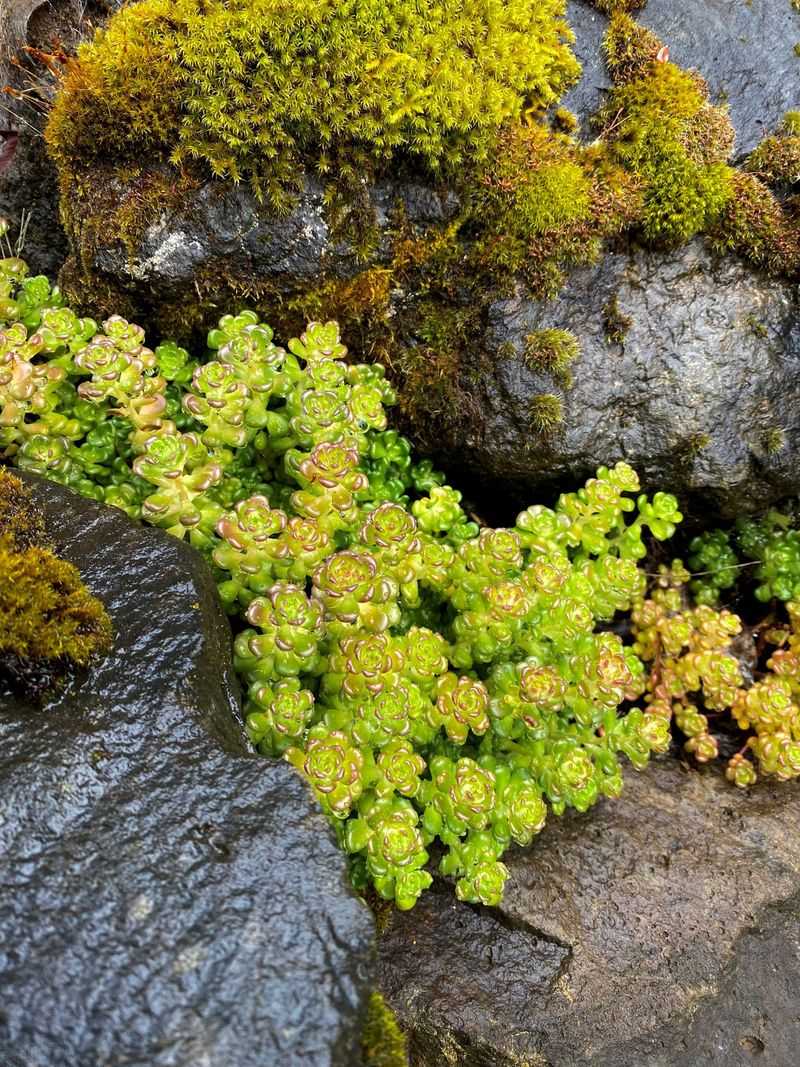Portland gardeners are rethinking the classic lawn, swapping thirsty grass for clover and wild herbs. These lush, low-maintenance ground covers are perfect for our dry summers. They turn ordinary yards into vibrant, living ecosystems.
Beyond saving water, these alternatives support the bees and butterflies that keep our gardens thriving. Clover blooms attract pollinators, while wild herbs add texture and scent.
It’s a win for both beauty and biodiversity. I’ve seen Portland neighborhoods bloom with these resilient landscapes. They’re practical, eye-catching, and built to handle our shifting climate—one yard at a time.
1. Start With Microclover For An Easy Transition
Microclover creates a soft, walkable surface that blends beautifully with existing grass. Unlike traditional lawns that need constant watering during Portland’s dry months, this resilient plant stays green with minimal irrigation.
I replaced half my North Portland yard last spring, and the difference in water usage was immediately noticeable. The tiny white flowers attracted bees without becoming overwhelming.
For families concerned about play areas, microclover handles foot traffic well and doesn’t stain clothing like regular clover varieties can. It’s the perfect stepping stone toward a fully eco-friendly yard.
2. Create A Thyme Pathway Through Your Garden
Creeping thyme transforms neglected walkways into fragrant, practical paths that handle Portland’s occasional freezes with surprising hardiness. The gentle scent released when walked upon creates a sensory experience that grass could never match.
My neighbor on Hawthorne replaced her side yard path with woolly thyme three years ago. Even during last winter’s cold snap, it bounced back vigorously while requiring almost no maintenance.
Choose from varieties like ‘Elfin’, ‘Woolly’, or ‘Red’ thyme to add visual interest while providing drought resistance once established. They’ll spread naturally, filling in spaces between stepping stones.
3. Mix Roman Chamomile For A Fragrant Carpet
Roman chamomile creates a wonderfully scented ground cover that releases a sweet apple fragrance when crushed underfoot. For Portland gardens with partial sun exposure, this perennial herb offers the perfect balance of beauty and functionality.
Walking across my chamomile patch after a light Willamette Valley rain has become one of my favorite garden experiences. The plant’s feathery foliage forms a dense mat that naturally suppresses weeds.
Consider planting chamomile in areas where you’d normally struggle with grass, like dappled shade under Oregon’s native trees. Its delicate white flowers add visual interest while attracting beneficial insects.
4. Embrace White Dutch Clover For Full Lawn Replacement
White Dutch clover thrives in Portland’s climate and naturally fixes nitrogen, eliminating the need for fertilizers that run off into our local waterways. The small white flowers feed bees from spring through fall, creating a living ecosystem.
After completely replacing my SE Portland lawn three seasons ago, I’ve watched native pollinators return in impressive numbers. During summer droughts, my yard stays green while neighbors’ grass turns brown.
For families with children, clover creates a comfortable play surface that’s cooler underfoot than grass during hot days. The occasional four-leaf find adds a touch of whimsy that traditional lawns can’t offer!
5. Scatter Native Oregon Strawberries Among Herbs
Wild Oregon strawberries (Fragaria virginiana) create a delightful edible groundcover that spreads through runners, naturally filling bare spots between other herbs. The sweet berries provide unexpected treats throughout summer.
Last year, I tucked these natives throughout my NE Portland herb garden. Children from the neighborhood now stop by to hunt for the tiny, intensely flavored berries that commercial varieties can’t match.
Unlike ornamental strawberries, these natives have evolved to handle our specific climate conditions. They thrive with minimal care while their small white flowers support local pollinators before transforming into ruby-red treats.
6. Layer In Self-Healing Ground Covers Like Corsican Mint
Corsican mint creates a carpet of tiny leaves that release an intense fragrance when brushed against. Despite Portland’s occasionally harsh winters, this ground cover bounces back vigorously each spring, filling in its own bare spots.
The refreshing scent reminds me of mojitos every time I work in that corner of my garden! Its creeping habit allows it to flow around stepping stones and between larger plants.
Portland’s clay soils actually benefit from the mint’s shallow root system, which helps prevent erosion during our heavy winter rains. Just be sure to contain it with edging if you don’t want it spreading throughout your yard.
7. Install Yarrow Patches For Drought-Prone Areas
Yarrow stands up to Portland’s increasingly hot summers with remarkable resilience. Its feathery foliage creates a soft texture while the flat-topped flower clusters add architectural interest and attract beneficial insects.
My west-facing slope that used to burn up by July now stays green and buzzing with pollinators thanks to yarrow. The native varieties in particular seem to handle our climate fluctuations with ease.
For Portland gardeners worried about water restrictions, yarrow continues looking fantastic even when irrigation is limited. Choose white-flowering varieties for a meadow look or colorful cultivars like ‘Paprika’ or ‘Moonshine’ for more visual impact.
8. Blend Multiple Herb Varieties For Textural Interest
Combining herbs with different growth habits creates a tapestry effect that’s far more interesting than a traditional monoculture lawn. Low-growing oregano, thyme, and chamomile work beautifully together in Portland’s moderate climate.
The varied textures in my herb lawn catch morning dew in fascinating patterns, especially during our misty fall mornings. Each plant contributes unique qualities while supporting different beneficial insects.
For best results in Portland’s clay-heavy soils, amend thoroughly before planting and choose locations based on drainage patterns. The herbs will intermingle naturally over time, creating a self-sustaining ecosystem that evolves with minimal intervention.
9. Transform Shady Areas With Sweet Woodruff
Sweet woodruff thrives in Portland’s shaded areas where grass struggles, creating a lush carpet of whorled leaves topped with delicate white flowers in spring. Its vanilla-like scent intensifies when dried, adding a sensory dimension to your garden.
Under the massive Douglas fir in my backyard, sweet woodruff has completely replaced the patchy grass that never thrived there. During our occasional summer heat waves, this cool-loving plant maintains its fresh appearance.
For Portland gardeners dealing with tree roots and shade, this European native offers an elegant solution that requires almost no maintenance once established. It spreads gradually, making it well-behaved compared to more aggressive ground covers.
10. Edge Your Property With Low-Growing Native Sedums
Oregon’s native sedums create living borders that thrive in our wet winters and increasingly dry summers. Their succulent leaves store water, making them perfect for Portland’s unpredictable rainfall patterns.
Along my driveway where heat radiates from the concrete, sedums have replaced the struggling grass that needed constant attention. Their subtle color changes throughout the seasons add unexpected visual interest.
For Portland gardeners concerned about erosion on slopes, sedums’ spreading root systems help hold soil in place during heavy winter downpours. Their drought tolerance means you’ll save water while still maintaining an attractive landscape that reflects our region’s natural beauty.

